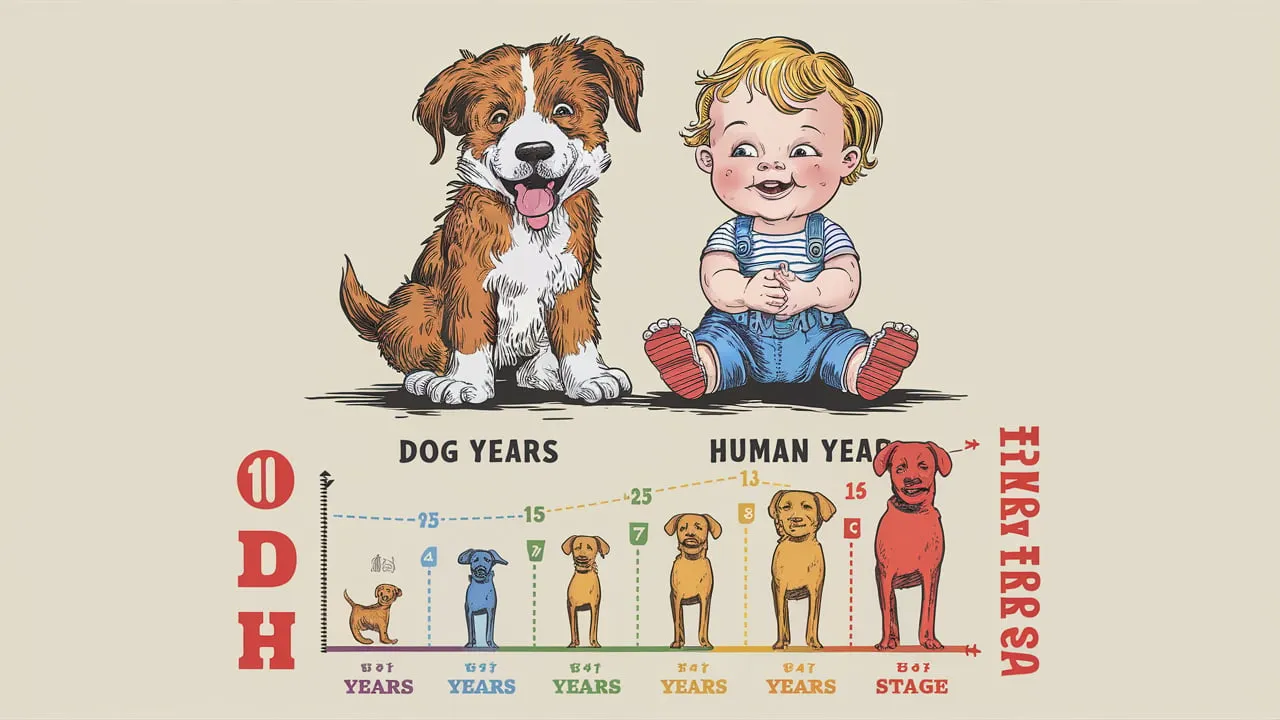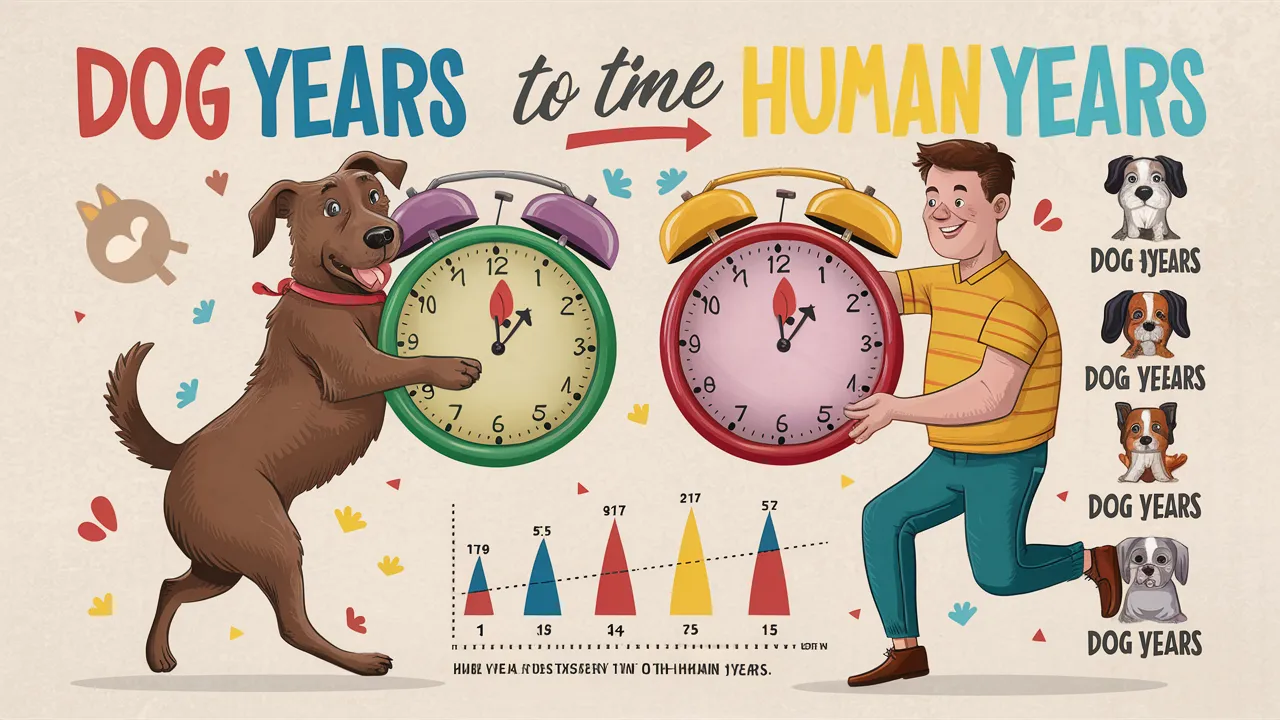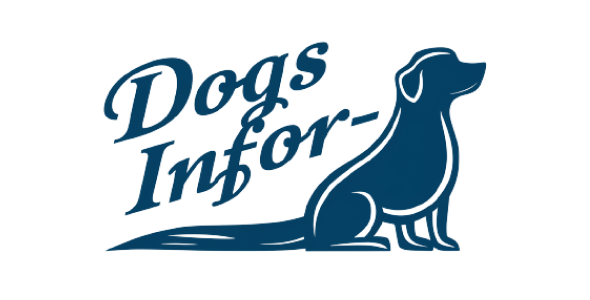Ever wondered how many Dog Years To Human Years? It’s a common question among pet owners.
Let’s dive into the world of dog years and how they compare to human years with Dogs Infor.
The Concept of Dog Years
Dog years are a way of comparing a dog’s age to a human’s age, taking into account their different lifespans and aging rates.
Why Dog Years Are Different?
- Shorter Lifespan: Dogs have a significantly shorter lifespan than humans, typically ranging from 10 to 15 years, depending on the breed.
- Faster Aging: Dogs age at a much faster rate than humans, especially in their early years.
The Rate of Dog Aging
- Early Years: A dog’s first year is equivalent to about 15 human years, and their second year is equivalent to about 9 human years.
- Later Years: After the first two years, each dog year is roughly equivalent to 4-5 human years.

Converting Dog Years to Human Years
While the concept of dog years is helpful for understanding a dog’s age relative to humans, converting dog years to human years can be tricky.
The Traditional Conversion Chart
The most common method uses a simple chart, where each dog year is equivalent to a certain number of human years:
| Dog Year | Human Year |
| 1 | 15 |
| 2 | 24 |
| 3 | 28 |
| 4 | 32 |
| 5 | 36 |
| 6 | 40 |
| 7 | 44 |
| 8 | 48 |
| 9 | 52 |
More Accurate Conversion Methods
While the traditional chart is easy to use, it’s not very accurate, especially for older dogs. More accurate conversion methods take into account the different aging rates throughout a dog’s life:
- The “Dog Years Calculator”: Many online calculators use more sophisticated formulas to provide a more accurate conversion based on the dog’s breed, size, and age.
- Veterinary Consultation: Your veterinarian can provide the most accurate assessment of your dog’s age in human years, taking into account their individual health and development.
Dog Life Stages
Dogs like humans, go through distinct life stages, each with its unique characteristics and needs. Understanding these stages helps you provide the best care for your furry companion.
Puppyhood
- Age: From birth to about 1-2 years old (depending on breed).
- Characteristics: Playful, energetic, curious, rapidly growing, teething, learning basic obedience, forming social bonds.
- Needs: Frequent feeding, socialization, training, veterinary checkups, vaccinations, deworming, appropriate toys and chew toys, safe environment.
Adulthood
- Age: From 2-7 years old (depending on breed).
- Characteristics: Mature, confident, independent, settled into routines, peak physical condition, less energetic than puppies.
- Needs: Regular exercise, balanced diet, annual veterinary checkups, dental care, grooming, mental stimulation, companionship.
Seniority
- Age: From 7-10 years old (depending on breed).
- Characteristics: Graying muzzle, slower movement, less energy, changes in sleep patterns, decreased appetite, potential for health issues.
- Needs: Gentle exercise, senior-specific diet, regular veterinary checkups, dental care, joint support, comfortable bedding, patience and understanding.

Understanding Dog Aging
As dogs age, they go through physical, behavioral, and health changes that are important to recognize and address. Understanding these changes can help you provide the best care for your senior dog.
Physical Changes
- Graying Muzzle: A common sign of aging, but not always indicative of health problems.
Slower Movement: Dogs may become less agile and have difficulty jumping, climbing stairs, or running. - Decreased Muscle Mass: Muscle loss can lead to weakness and difficulty with mobility.
- Weight Changes: Dogs may gain or lose weight as they age due to changes in metabolism and activity levels.
- Changes in Coat: The coat may become thinner, duller, or more prone to shedding.
- Vision and Hearing Loss: Dogs may experience age-related vision and hearing loss, which can affect their behavior and ability to navigate their environment.
Behavioral Changes
- Sleep Changes: Dogs may sleep more frequently and for longer periods.
- Decreased Energy Levels: They may be less interested in playing or going for walks.
- Cognitive Decline: Some dogs may experience cognitive decline, such as confusion, disorientation, and changes in behavior.
- Increased Grumpiness: They may become more irritable or snappish, especially if they are in pain or discomfort.
- Changes in Appetite: They may eat less or more frequently, or develop food preferences.
- House Soiling: They may have accidents in the house due to changes in bladder control or cognitive decline.
Health Considerations
- Increased Risk of Health Problems: Senior dogs are more susceptible to health problems, such as arthritis, heart disease, kidney disease, and cancer.
- Regular Veterinary Checkups: It’s crucial to schedule regular veterinary checkups for senior dogs to monitor their health and catch any potential problems early.
- Special Needs: Senior dogs may require special care, such as medication, dietary changes, and assistive devices.
Conclusion
Understanding how to calculate your dog’s age in human years helps you provide better care throughout their life. Remember, every dog is unique, and their aging process can vary.

Related Post
What Human Food Can Dogs Eat? Safe & Unsafe Foods
What Are Dog Bones Made Of? A Guide To Safe And Healthy
The Ultimate Guide To Dog Injection Schedule